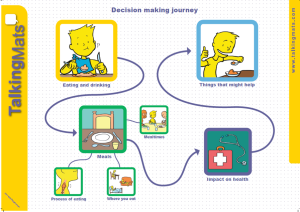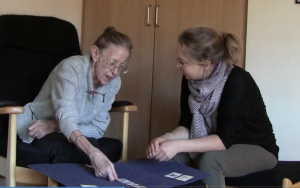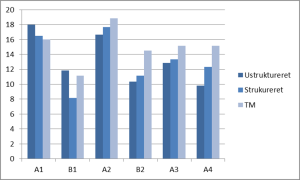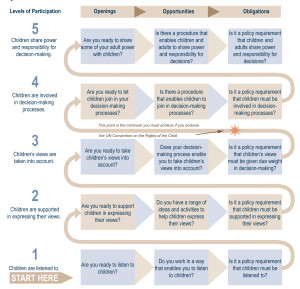We are delighted to introduce Laura Holmes our first Regional Talking Mats Associate. She is joining the Talking Mats team and will be working in the North West of England. I will let Laura introduce herself:-
” Hi, I am a Speech and Language Therapist working in Stockport, Cheshire. I am delighted to be joining Talking Mats as the first Regional Associate, covering the North West of England. I work 1 day a week, term-time only for Talking Mats, as well as 3 days a week for the NHS. I am excited about developing awareness, understanding and use of Talking Mats across the area, within the context of the SEND reforms in particular, over the next few months. I feel Talking Mats is a very effective way of truly capturing the voices of the children and young people I work with. The Talking Mats approach also links well with the use of Therapy Outcome Measures, which I am currently trialling with my caseload. I am looking forward to sharing my knowledge and experiences to facilitate wider use of this versatile approach across the North West region.”
It is great to have Laura working with us to build on some of the excellent work being done already in the North West. Two examples of best practice are in Wigan where Talking Mats are used to increase child participation and more recently in Salford. Children’s services in Salford NHS foundation trust are committed to seeking the views of children and young people about how they feel about their health appointments. They have finished piloting their own Talking Mats set and the revised set has just been sent to the printers – it looks great.
We are running a training course in Liverpool on the 21st April and we would love to meet more of you from the North West.
The Talking Mats Eating and Drinking resource provides insight into what service users perceive their difficulties to be and can help raise issues that care providers are unaware of.
Gillian Callander, speech and language therapist wrote the following review.
I have used this Talking Mats resource with adults with learning disability and it has been a valuable tool in discussing issues that they have with their eating and drinking and in providing a focus for discussion. It helps understanding of what can be an abstract and complex subject and can aid the planning of next steps.
There are 3 symbol sets included with the resource
- Meals
- Health
- Things that might help
I have also used this resource with additional personalised symbols to discuss potential specific changes to eating and drinking and to gather information about how the service user would feel about this. There were blank symbols included with the resource which can be used for this purpose.
The symbols in this pack provide a range of subjects to be discussed and are clearly categorised. I have found that for the service users I work with that the “meals” set and “things that might help” have been the most relevant and easiest for discussion and the symbol sets provided ably support this. The “health” category is a little bit more abstract and is harder to discuss with this client group, particularly if this issue is one that may occur but currently is not causing any difficulties. However, it does provide a basis and support for this discussion and helps to tackle issues that are more complex and abstract.
I have found that using this Talking Mats resource has provided increased clarity during discussions with service users about eating and drinking and it provides service users with a more consistent method to express feelings about eating and drinking and the impact of any difficulties. It also supports me by giving a way to convey the information about concerns or potential changes to eating and drinking using the same method of communication as the service users, thus providing a method to enhance two way communication and facilitate discussions. It helps to ensure, that as far as possible, service users are able to input into the discussion about their eating and drinking and to make their opinions known. Using the Talking Mats has helped to provide evidence that service users do/do not understand the information being presented and can help decide outcome with regard to capacity for decision making.
Based on my experience of using this resource, I would recommend this as a valuable addition to your eating and drinking assessment tools.
Gillian Callander
We are holding a specialist Dysphagia and Decision Making training which includes the Eating & Drinking resource. Please follow this link to book your place
https://www.talkingmats.com/training/specialist-seminars/
Or download this flier and registration form: Dysphagia and Decision Making flier
Following the success of previous seminars we are holding further specialist seminars in Stirling and London for anyone who has done the Talking Mats training. The topics will be:
- Talking Mats and the Eating and Drinking resource (morning)
- Talking Mats and Capacity (afternoon)
During the Eating and Drinking seminar, we provide background on how and why the resource was developed and showed some DVD examples of people using the resource. This really brings things to life and shows how important it is to give people (with and without speech) the opportunity to consider and talk about different aspects of eating and drinking. We also give people hands-on practice in using the symbols from each topic. Each participant will receive a copy of the full Eating and Drinking resource, including symbols, a mat, and explanatory booklet.
During the Capacity seminar we will discuss the fundamental principles of the Capacity Act and participants will have a chance to consider how Talking Mats can help people to:
- understand
- retain/remember
- weigh up information
- communicate their views/wishes and feelings.
They will also be given the opportunity to work through some practical examples and think about options to help people understand issues and make decisions.
If you have completed a Talking Mats training course and would like to attend either of specialist seminars, please click on the relevant course and fill in the registration form.
Stirling on Friday 29th April Stirling Seminars flier Apr 2016
London on Friday 10th June London Seminars flier June 2016
Registration form Seminar registration form 2016
This is the second of Kristine Pedersen’s projects using Talking Mats as a tool to support people with dementia.
Care workers at two residential care homes in Denmark were taught how to use the Talking Mats framework and how to incorporate the method into planning daily activities for people with dementia.
The care workers gave positive feedback in regard to using Talking Mats:
- Using the Talking Mat framework provides important knowledge about communicative difficulties of the person with dementia
- Talking Mats helps people to understand their options and thereby motivates to social activities, eating, physical exercise, etc.
- Talking Mats increases the possibility of active participation in caregiving plans
- Talking Mats enhances the joy of work, when I know how I can give the right care
- The Talking Mats conversations support a closer relation between elderly and care giver
This project and the one described in the previous blog, gave the opportunity to explore the Talking Mat framework in use and how the framework can support the communication of people with dementia. Very importantly, due to the adoption of Talking Mats and its extension in Denmark, the projects gave a lot of Danish examples. The projects also gave important information about how to implement the tool in care homes for people with dementia within a Danish setting.
‘We are very grateful to the Directors, Dr Joan Murphy and Lois Cameron and everyone on the team at the Talking Mats Centre who developed the framework and who continue to increase knowledge of Talking Mats through research and education. It is a very helpful tool for many people and supports and enables more people to have their views seen and heard’
And we are grateful to Kristine for sharing her projects with us.
We are very grateful to Kristine Pedersen from Kommunikationscentret in Denmark for sharing the findings of 2 projects with us. The first project found Talking Mats was effective in supporting communication for people who have dementia when compared with both unstructured and structured conversations.
‘t is important to know how to give people with dementia the right support’
At Kommunikationscentret in Hillerød (Denmark), we have been using the Talking Mats framework since our first trainer was accredited at the Talking Mats Centre, University of Stirling in 2010. We have been using Talking Mats with both children and adults across a range of communication difficulties e.g. caused by Aphasia, Cerebral Palsy, Downs Syndrome, learning difficulties etc. Inspired by the important research project by Dr. Joan Murphy and others ‘Decision making with people with dementia’ (2010), our next step was to gain our own experience within the framework specifically aimed towards people with dementia.
As in the rest of the world, the number of people in Denmark with dementia is increasing. Symptoms of dementia vary from person to person but many of the symptoms are related to communication: Difficulties finding words, using familiar words repeatedly, losing track in conversation, difficulties in focusing and paying attention etc. The growing dependence of the person with dementia on a caregiver makes communication essential to express wishes and needs. Therefore, it makes sense to look at the consequences of the illness (dementia) within the perspective of communication and how family members and professionals around the person with dementia can support communication using AAC.
The purpose of the first project was to compare the communication in conversations about views on I) Daily activities and II) The importance of information, using three different communication methods. The methods were: 1) unstructured conversation 2) structured conversation 3) the Talking Mats framework. The project involved 6 participants having early to moderate stage dementia, all living in residential care homes.
Like the study ‘Decision making with people with dementia’ (2010), the report concludes that the Talking Mats method was associated with better communication for the majority of the participants. The Talking Mats framework was found especially helpful regarding the participant’s ability to understand subject and question of the conversation, the participant’s ability to reflect, and the participant’s ability to make themselves understood. The graph below shows that only one participant (A1) did not benefit from the visual method. She had poor eyesight, which strongly indicates that visual support compensates the difficulties that people with dementia have.
The report also concludes that the Talking Mats framework increases the interviewer’s ability to detect and compensate for some of the communication difficulties. Finally, it seemed that several of the participants have been able to learn how to use Talking Mats in the process.
The photo underneath shows a Talking Mat conversation from the project. This Talking Mat gives an insight into how this person feels about what information is important to her, and what isn’t. It is in some way a difficult and abstract question, but most of the participants managed to both understand, reflect and answer the question when we used the Talking Mats framework.
Important information to this participant is information about new neighbours, the menu at the residential care home, economy etc. Less important is news about the Danish royal family, technology, getting older etc. Politics is definitely not important to her.
One of the issues which has emerged from previous Talking Mats and dementia projects is that many people with dementia experience difficulties with mealtimes and that it can affect people at any stage of dementia.
Mealtimes involve two of our most fundamental human needs, the basic physiological requirements for food and drink and interpersonal involvement. Mealtimes are particularly important for people with dementia as they may develop difficulties both with eating as a source of nourishment and with the social aspects of mealtimes.
In 2015 Joan Murphy and James McKillop carried out a project, funded by the Miss EC Hendry Charitable Trust, to gather information from the first-hand experience of people with dementia about their views about mealtimes. We ran three focus groups and used the Talking Mats Eating and Drinking Resource to allow participants to reflect, express and share their views.
Findings:
The people who took part in this study felt that there were significant changes in their eating and drinking since their diagnosis of dementia. For some, their experience of mealtimes had changed and several said that they now skip breakfast and sometimes lunch. For some this seemed to be related to forgetting to eat and drink, for others it related to changes in taste whereas for others these meals seemed to be simply less important. Forgetting to eat was particularly noted by the participants with dementia and confirmed by their spouses.
The social aspect of eating and drinking also changed for many of the participants and, given the importance of social engagement for quality of life it is important to be aware of the effects of changes in eating and drinking on mealtime dynamics. For some it may be that they are now less interested in the social aspect of eating with others at home. Others found it hard to eat out because of distractions and lack of familiarity while some felt embarrassed about eating out in front of strangers. Others still really enjoyed going out for meals but added that they preferred to go somewhere well-known to them. The shared mealtime may be a particularly crucial opportunity for social engagement as it plays a central role in our daily lives. Social relationships are central for not only enhancing quality of life, but also for preventing ill health and decreasing mortality (Maher, 2013).
Almost all the participants talked about how their taste had changed both for food and drink which in turn affected their appetite. Some families had overcome the problem of lack of taste by going for more strongly flavoured food. When asked specifically about drinking, thirst was noted as a significant change since diagnosis
Their feelings about the texture of food did not appear to have changed significantly and was simply a matter of preference.
Three additional health issues which the participants felt were connected with eating and drinking were poorer energy levels than before their diagnosis, reduction in ability to concentrate and changes in sleep patterns.
For a copy of the full report please click here Dementia and Mealtimes – final report 2015
Get your New Year’s resolution Talking Mat here!
Talking Mats is a social enterprise whose vision is to improve the lives of people with communication difficulties. 2015 has been another exciting year for us. We have had great opportunities to work with a fantastic range of people and hear great stories: from wee ones in nurseries using Talking Mats to encourage active participation and decision making, to older people and their families through our dementia family training project. It is our core belief that good communication is fundamental to a quality service. Making sure there is space for active listening to views and concerns particularly, if individuals have difficulties communicating is central to effective interactions and individualised, person centered care. We are really grateful to all the people who have supported the work of Talking Mats; people with communication support needs, staff who work with them and organisations that we are privileged to work with on a consultancy basis.
It will not surprise you to know that as an organisation we like to set goals and then go for them so as our thank you to you all for your continued support , we have created our very own New Year’s resolution Talking Mats;
• What are you definitely going to go for ?
• What is in the maybe pile – or that could be for those things you are already doing and will continue
• What is not a goal for you in 2016 .
• Don’t forget to use the blanks to personalize it further!
• Plus take a photo so you can reflect back on where 2016 takes you and whether you achieved your goals .
So open and download it , cut it up and we hope you enjoy using the resolution Talking Mat with friends and family ! resolution pics
We wish you all every health and happiness from all in the Talking Mats team
Fika (coffee time) in the Talking Mats office is always interesting. Recently we got chatting about Christmas preparations and who had the longest ‘to do’ list. There was a definite variation in enthusiasm for all things Christmas. We needed to do a Talking Mat! This was done on our digital Talking Mats – it’s easy to import your own images now and make a digital Talking Mat about any topic.
Eating , drinking and games and puzzles got the thumbs up! (Lois is the games queen and was the most enthusiastic about that).
Holiday, partying and entertaining got consensus.
Extended family coming to stay? This moved around a bit, but was generally positive (say no more!)
Shopping was in the mid section-we all agreed. Perhaps by now it would be less positive with last minute mayhem.
Gifts was added as a blank (how could the interviewer forget that) and not everyone was comfortable about the commercialisation of Christmas.
‘How do you feel about Juggling demands?’ We all agreed -not sure. Again remember, Talking Mats is how a person feels at a certain point in time. Ask us again on Christmas Eve?!
Christmas cleaning? All agreed was a chore and some thought best not to get too bothered about it
Talking Mats supports a group conversation. We all got our say
Merry Christmas one and all
What works well when implementing Talking Mats?
Our last blog highlight how the Wigan Pathfinder Project selected Talking Mats from a range of tools to consult with pupils who have Education, Health and Care plans (EHCP) . They reported that Talking mats provided :
- An objective, neutral space – a thinking tool- ‘Children and young people are able to consider their priorities when setting targets’.
- Opportunities for change – ‘Children and young people are able to make changes to their initial thoughts and have time to decide and reconsider options’.
- A truly person centred approach
- It was fun!
Additional factors they commented on which worked well when consulting with pupils about decision making and goal setting were:
- Good liaison with parents and staff who know the child well before the session
- Adapting the length of the session to the child’s needs
- Ensuring a suitable room without too many distractions
- Using the teaching scale
- Putting the child’s name on the mat
- Placing all topics in one envelope for easy access
- Allowing time to sort symbols and discard irrelevant ones.
- Reducing the number of symbols used depending on the child’s needs
- Changing the top scale symbols to support the child’s understanding where necessary
- Keeping a verbal record where appropriate
- Working in pairs whilst learning the approach
- Using the effectiveness coding framework (all case studies scored above 75%, therefore considered effective using this measure)
The Talking mats training focuses on teaching how to establish a consistent and appropriate top scale, maintaining a clear topic and using the effectiveness framework. It also presents a model for thinking about who can and cannot use the mat and for what types of questions and discussions
We are grateful to Emma Atkiss, one of our accredited trainers for this interesting report.
The purpose of The Voice of the Child pilot project carried out by the Wigan Pathfinder team was to obtain pupil views using a viable tool. The team selected Talking Mats as a framework to support pupils to express their views in decisions regarding their lives. They were working on the principle that engaging with the young person and his/her family would lead to better outcomes
The project team considered that Talking Mats met the 5 criteria of Shier’s model of participation (2001)
- Children are listened to.
- Children are supported in expressing their views.
- Children’s views are taken into account.
- Children are involved in the decision-making processes.
- Children share power and responsibility for decision-making.
Click on diagram to enlarge.
The pupils in the pilot ranged from 7 to 17 years with a range of disabilities. During the pupil interviews the team found that the Talking Mats Health and Well being resource provided a practical framework for decision making and target setting
Talking mats provided :
- An objective, neutral space – a thinking tool- ‘Children and young people are able to consider their priorities when setting targets’.
- Opportunities for change – ‘Children and young people are able to make changes to their initial thoughts and have time to decide and reconsider options’.
- A truly person centred approach
- It was fun!
For example : A seven year old child with Autistic Spectrum Disorder identified both her cognitive strengths and areas for development using the Learning and Thinking domain. She provided feedback regarding her difficulty in attending when faced with too much information or choice and also her strength in planning skills. Thinking skills targets and interventions can be developed using this information as a starting point.
Their report states that the information gained from Talking Mats can be used, as part of the Education Health and Care planning and review cycle, to inform both decision-making and goal setting for children and young people i.e. It identifies strengths; It identifies areas to develop; It identifies the child / young person’s response to a range of experiences; It informs day-to-day decision-making ; It informs both targets and interventions for Individual Education Plans and it supports transition planning.
Ref : Engaging the voice of the child / young person at an individual level – Emma Atkiss,Senior Educational Psychologist and Caroline Gomez, Educational Psychologist, Wigan council
 Online training login
Online training login 










